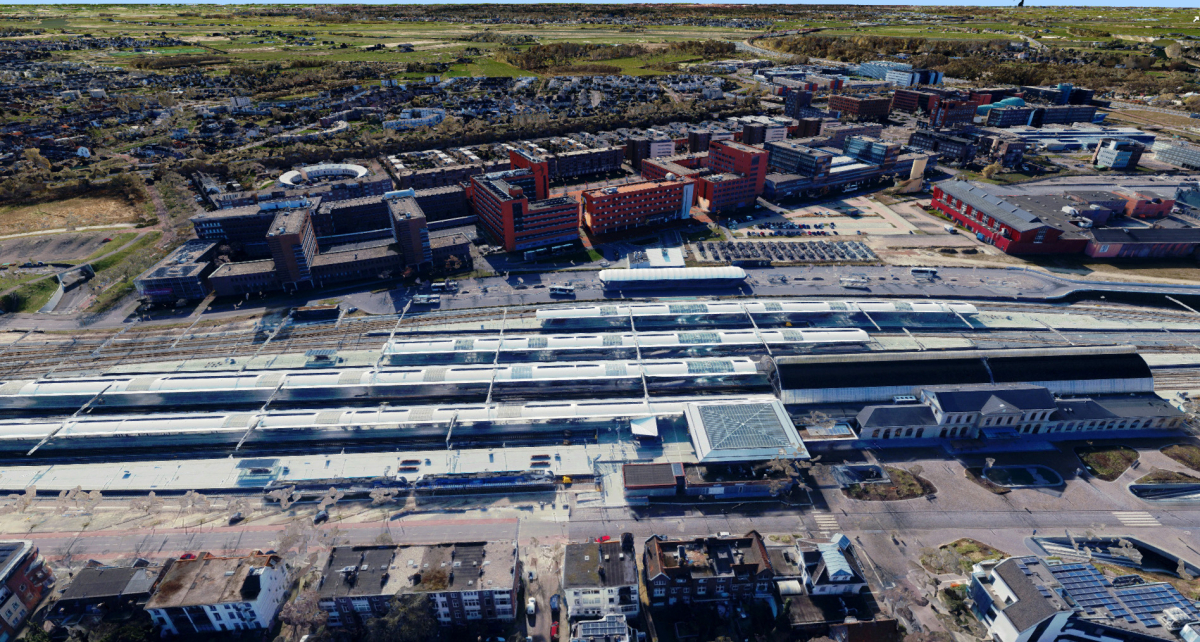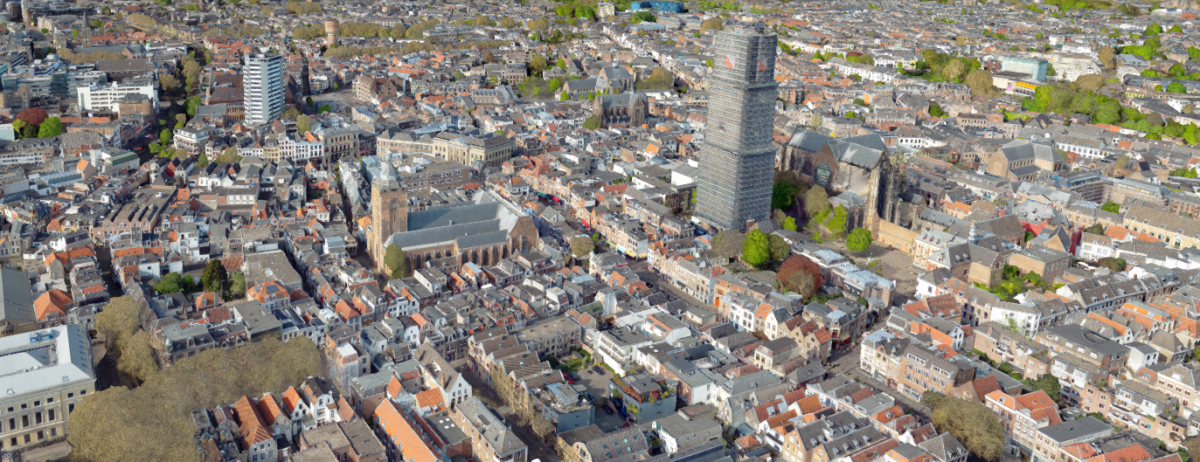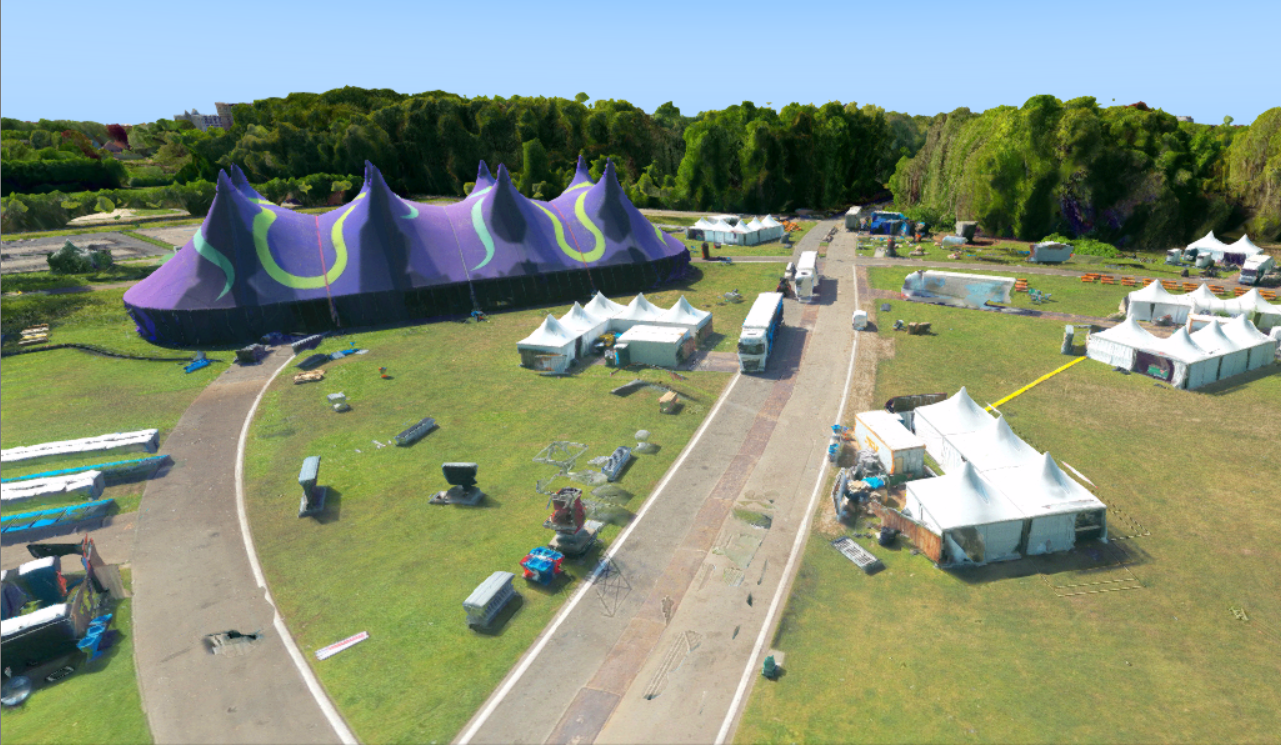Blog | 29 December 2023
Creating 3D models for Digital Twins visualization
The Ultimate Guide to a Digital Twin 3D Model: Everything You Need to Know
We live in a time where digital advancements are redefining our reality. Grasping the concept of a digital twin 3D model is essential in this digital era. This guide offers an in-depth look at digital twins, unraveling their functions and transformative roles across various sectors. Merging physical and digital realms, these models are a key to unlocking insights that are reshaping design, planning, and operational methods in diverse industries. For those intrigued by the fusion of technology with the tangible world, and its potential to revolutionize data usage and modeling, this piece is a treasure trove of information.
What Is a Digital Twin and How Does It Work?
Understanding the Concept of a Digital Twin
Envision a digital mirror image of a physical entity, whether it's an object, process, or system – this is what we call a digital twin. Acting as a dynamic virtual model, it mirrors and interacts with its physical counterpart. This platform, initially developed in NASA's space programs, is now pivotal across various industries, offering a real-time digital reflection of the physical world for simulations, analyses, and forecasting.
Key Components and Technology Behind Digital Twin
At the core of digital twin technology lies a fusion of several advanced technologies. Central components include 3D modeling, IoT data, and instant analytics. Essential tech elements like Building Information Modeling (BIM), Computer-Aided Design (CAD), and Geographic Information Systems (GIS) are integral in crafting these detailed digital doubles. These technologies weave together, animating static data and transforming it into valuable insights.
Creating a Digital Twin: Process and Techniques
The creation of a digital twin initiates with the gathering of data, often employing cutting-edge scanning methods such as LiDAR or photogrammetry. This data is then funneled into 3D modeling software, amalgamating with IoT and business data. The outcome is an interactive, evolving multi-dimensional model, a blend of captured reality and digital innovation.
Benefits of Digital Twin Technology
The advent of digital twin technology marks a turning point, offering numerous advantages. It sharpens decision-making, refines operations, and curtails expenses by enabling virtual trials and scenario evaluations. In realms like construction and manufacturing, it diminishes errors and heightens maintenance efficiency. Digital twins also contribute significantly to sustainable practices, promoting energy-efficient designs and methodologies.
Integration of Digital Twin with BIM
Fusing digital twin technology with Building Information Modeling (BIM) revolutionizes the building and architectural sectors. This combination offers a vivid, multi-faceted view of projects, enriched with data and visual insights. It enhances design, construction, and maintenance processes, assuring that projects align with their digital blueprints while adapting to real-world changes.

How to Create and Use 3D Model for Digital Twin
Utilizing 3D Scene and BIM for Creating Digital Twin
The process of creating a digital twin using 3D scenes and BIM is transformative. It begins with comprehensive 3D modeling of physical entities, followed by integration with BIM data. This union produces a digital twin that not only portrays physical characteristics but also simulates real-world scenarios, elevating both design and operational effectiveness.
Immersive 3D Models: Advantages and Applications
Immersive 3D models elevate visualization to unprecedented levels. They allow stakeholders to virtually explore spaces, offering a vibrant, interactive experience. This immersive aspect is especially valuable in urban planning, real estate, and cultural heritage preservation, assisting in visual communication and joint decision-making. In healthcare, these models are pivotal for intricate simulations, encompassing everything from surgical prep to facility management. The subsequent sections will delve further into the nuances of digital twin technology, exploring its applications, challenges, and integration with IoT. We will also look at the workflow for setting up a 3D scene studio environment, providing a hands-on guide for harnessing this technology effectively. More enlightening details on this groundbreaking digital instrument await.
Real-world Applications and Challenges of 3D Digital Twins
3D digital twins are forging new paths in a variety of sectors, from city planning to industrial manufacturing. These virtual replicas play a key role in simulating intricate systems, forecasting maintenance needs, and refining product designs. Yet, they face hurdles. Concerns over data security and privacy, along with the requirement for ongoing updates, present significant challenges. Furthermore, seamlessly integrating these sophisticated systems into current workflows necessitates extensive tech expertise and considerable investment in resources.
Internet of Things (IoT) and Digital Twin: Use Cases
The merger of IoT with digital twins opens a realm of endless possibilities. IoT devices capture data in real time from physical assets and funnel it into digital twins for active analysis. This powerful combination is showcased in smart city initiatives, optimizing urban infrastructure. In the healthcare sector, integrating patient monitoring systems with digital twins paves the way for tailored treatment strategies. Similarly, industrial IoT gains advantages in machinery upkeep and production methods through predictive analytics.
Workflow for Initializing 3D Scene Studio Environment
Setting up a 3D scene studio for developing digital twins begins with establishing a solid computing base. This stage involves selecting appropriate software for 3D modeling, integrating IoT data, and conducting analyses. Following the selection of tools, the workflow progresses to importing spatial data, establishing IoT connections, and defining parameters for simulation and visualization. This methodical process is essential to guarantee the precision and functionality of the resulting digital twin.

Benefits and Use Cases of Digital Twin
Optimizing Spatial Data for Digital Twin Enhancements
For digital twins to reach their full potential, optimizing spatial data is crucial. Utilizing high-resolution imagery and exact geospatial data, digital twins can accurately depict physical areas. This level of detail is particularly crucial in urban planning for aiding in disaster management and infrastructural development, and in agriculture for improving land management and crop surveillance, leading to heightened efficiency and productivity.
Implementing Digital Twin Technology for Real-time Insights
The adoption of digital twin technology for instantaneous insights is revolutionizing how decisions are made. Digital twins, reflecting real-world conditions, offer immediate feedback on changes and possible outcomes. This feature is vital in the energy sector for grid management and resource distribution. The automotive industry also benefits, using these insights in vehicle design and testing, significantly cutting down on development time and expenses.
Use Cases of Digital Twin in Streamlining Processes
Digital twins are making processes more efficient across a range of sectors. In logistics, they enhance supply chain management by providing insights into stock levels, transport routes, and warehouse activities. The manufacturing industry sees gains in production line efficiency and downtime reduction. Digital twins also make construction projects more manageable, improving coordination and project oversight among stakeholders.
Simulation and Sensor Integration in Digital Twin Models
Incorporating simulation and sensor data into digital twin models introduces an extra layer to these virtual representations. By emulating physical processes and integrating sensor information, digital twins provide a live view of operational systems. This is especially beneficial for environmental monitoring, where sensor data is key in modeling the impact of climate change. In the aerospace industry, these simulations are instrumental in designing and testing aircraft, enhancing both safety and efficiency.
Creating a 3D Digital Twin for Physical Assets
The creation of a 3D digital twin for physical assets involves a detailed capturing of asset data, which is then recreated in a digital format. This technique is vital in asset management for maintenance, monitoring, and strategic planning. In the realm of historical preservation, it offers a digital method for conserving and studying cultural artifacts. Automotive industries employ 3D digital twins in prototype development, thereby reducing reliance on physical models and speeding up the design process.

Role of Digital Twin Technology in Digital Transformation
Digital twin technology is at the forefront of digital transformation, bridging the physical and digital worlds. It fosters innovation by offering a platform for experimentation and development, unfettered by the limitations of the physical realm. As digital strategies become more prevalent in business and industry, digital twins emerge as a crucial tool. They facilitate more effective operations, improved product development, and a deeper comprehension of intricate systems. More than just a part of digital transformation, digital twins act as a driving force, steering industries towards a future that is more interconnected and reliant on data.
Application of Digital Twins in Visualizing 3D Spatial Data
Digital twins excel in the visualization of 3D spatial data, offering immersive and comprehensive perspectives of physical areas and assets. This function is crucial in urban planning and architecture, enabling the three-dimensional visualization of entire cities and buildings. Environmental scientists utilize digital twins for visualizing changes and impacts in ecosystems, while archaeologists use them to digitally reconstruct and study ancient sites. The visual capabilities of digital twins not only enhance comprehension but also facilitate
Leveraging Azure Digital Twins for Building Digital Twin Graphs
Azure Digital Twins presents a robust platform for crafting digital twin graphs, empowering users to outline the intricate relationships and interactions in their specific environments. These graphs serve as representations of anything from multifaceted industrial setups to comprehensive smart city layouts. They offer a versatile foundation for dissecting and replicating real-world situations. With Azure’s substantial cloud backing, users are afforded the flexibility to expand their digital twins, maintaining both precision and reactivity in their models.
Real-time Data Handling and Management in Digital Twin Instances
The essence of digital twin instances lies in adept real-time data management and handling. These systems consistently assimilate data from varied sources, like IoT devices and sensors, to keep the twin updated with the latest conditions. This instant updating proves indispensable in sectors such as healthcare, where it's employed in patient monitoring, in the manufacturing sphere for overseeing processes, and in the energy sector for grid management. The capacity to promptly and precisely process this data is what sets digital twins apart as a crucial asset in contemporary industries.
Understanding the Concept of a Primary Twin in 3D Digital Models
In digital twin technology, the 'primary twin' concept plays a pivotal role. It refers to the foremost digital representation within a system, serving as the chief reference model. This primary twin is instrumental in comprehending and managing the system it symbolizes. For example, in managing a smart building, the primary twin constitutes the complete digital depiction of the structure, forming the core basis for simulations, analytical processes, and critical decision-making.
Use of Digital Twin Data in Physical and Virtual Environments
Digital twin data is applicable in both tangible and virtual realms. In physical settings, this data is pivotal for asset monitoring, operational optimization, and safety enhancement. Conversely, in virtual landscapes, it enables realistic simulations, training endeavors, and strategic planning. This dual utility of digital twins highlights their adaptability, effectively bridging real and digital domains.
Creating and Using 3D Content for Digital Twins
Exploring the Capabilities of Digital Twins in 3D Space
Digital twins in 3D space offer a broad spectrum of possibilities. They create a platform for generating detailed, interactive models of physical entities and environments. This feature is particularly crucial in industries like aerospace, automotive, and construction where intricate 3D models are vital for designing, testing, and analytical purposes. In entertainment, digital twins open new doors for crafting engaging experiences in gaming and virtual reality.
Converting Physical Assets into Digital Twins
The transformation of physical assets into digital twins involves an in-depth data collection process about the asset, which is then utilized to form an exact digital counterpart. This procedure is essential in manufacturing for asset management and predictive maintenance. It also plays a significant role in cultural heritage preservation, offering a digital means to safeguard and study artifacts and sites. This intricate process hinges on advanced scanning and modeling technology, ensuring the digital twin closely mirrors the original.
Utilizing 3D Scenes Studio Environment for Digital Twin Creation
Employing a 3D scenes studio environment for creating digital twins involves the use of specialized software for modeling, simulation, and visualization. This setting allows creators to fabricate precise digital replicas, integrating elements such as texture, lighting, and physics to enhance realism. The studio environment also supports the integration of real-time data, rendering the digital twin a dynamic and interactive tool.
Microsoft Learn: Detailed Resources for Digital Twin Development
Microsoft Learn offers an extensive array of resources for those delving into digital twin development. It provides tutorials, guidelines, and industry best practices. These resources span a range of digital twin technology aspects, from foundational knowledge to advanced application techniques. They are invaluable for developers and professionals eager to expand their expertise in digital twins or keep up with evolving industry trends.
Implementation of Digital Twin Data in the Context of IoT and Real-time Data
Integrating digital twin data within the realm of IoT and real-time data is reshaping industries by fostering more informed decision-making and streamlining operations. Integrating IoT data means digital twins can deliver current insights on system and asset status and performance. This integration is crucial in fields like supply chain management, where real-time logistics data can significantly boost efficiency and adaptability. In summary, digital twin technology stands as a powerful instrument, offering rich visualization, optimizing operational efficiency, and providing invaluable insights across various industries. Its application ranges from enhancing real-time data management to revolutionizing physical and virtual environment interactions.
Contact us
Let's get in touch!
